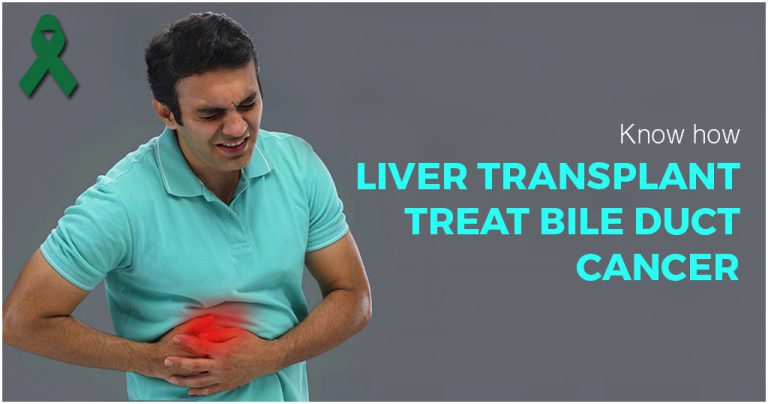
Liver Transplant is a revolutionary method to cure bile duct cancer. It is a new ray of hope for patients and offers a long-term chance of survival. Liver transplant has proven an effective treatment method for early-stage intrahepatic or perihilar bile duct cancers.
What is the Bile Duct?
Bile ducts are a network of long thin tubes that connects the liver to the gallbladder and small intestine. Bile duct carries bile, a yellow-greenish secretion produced by the liver. Bile contains salt and cholesterol which helps in digestion of our food. It also contains a waste product, known as bilirubin.
What is Bile Duct cancer and what are the types of Bile Duct cancer?
Bile duct cancer is also known as Cholangiocarcinomas; a rare disease which occurs in people above the age of 50. In Bile Duct cancer, the cancer cells (malignant) form in the bile duct and in some cases spread (metastasize) to other parts of the body as well. Cholangiocarcinomas are of the following types:
- Intrahepatic cholangiocarcinoma: Also known as a type of liver cancer, occurs in that part of the bile duct which is inside the liver.
- Hilar cholangiocarcinoma: Also known as perihilar cholangiocarcinoma, occurs in that part of the bile ducts that exit the liver.
- Distal cholangiocarcinoma: Distal cholangiocarcinoma occurs in that part of the bile duct that is nearest to the small intestine.
Visit your doctor immediately, if you have any of the following symptoms. The signs and symptoms of Bile Duct cancer include:
- Jaundice (yellowing of the skin or whites of the eyes)
- White colored stool
- Pain in the abdomen
- Fever
- Intensely Itchy skin
- Fatigue or nausea and vomiting
- Unintended Weight loss
If you have been diagnosed with Bile Duct Cancer, the doctor will make a customized treatment plan based on the following factors:
- Your overall health
- The extent of Bile Duct Cancer:
- a) Resectable Cancers: In resectable cancer, the tumour can be completely removed by surgery. This is decided based on the imaging and other tests results.
- b) Unresectable Cancers: In unresectable cancers, the tumour cannot be removed by surgery due to its positioning in a difficult place or if it is widely spread.
Based on the above factors, your doctor will decide the line of treatment which could be – Biliary drainage, Chemotherapy, Radiation therapy, Surgery or Liver transplant.
In case you have resectable cancer, potentially curative surgery is considered best to treat bile duct cancer. This has to be done by an expert, as the surgery is of a complex nature and requires an experienced and skilled surgeon. However, in the case of unresectable cancer, the patient is less likely to be benefitted by surgery. Hence, Liver Transplant is recommended to treat bile duct cancer.
Can a liver transplant treat bile duct cancer?
Although there are several treatment options available to cure bile duct cancer, a liver transplant is considered the best treatment option for early-stage unresectable cancer – intrahepatic or perihilar bile duct cancers. Diagnosing cancer at the early stage plays a key role in the treatment of cancer. Liver transplant is major surgery and there are potential risk factors associated with it, such as – bleeding, infection, complications from anaesthesia etc. The long-term survival post liver transplant is much similar to the survival of liver transplant for any other conditions.
What is the eligibility criteria to receive a liver transplant?
The factors considered before confirming liver transplant as the treatment option for bile duct cancer are:
- Condition of lung or heart
- Cancer must be localised to the liver
- Potential recipient must maintain the lifestyle to care for the new liver
How effective is a liver transplant for treating bile duct cancer?
Bile duct cancer is aggressive cancer with unfortunately not a positive outcome in many cases. Traditionally bile duct cancer was treated by removal of bile duct but the chances of recurrence of cancer are on the higher side. The patients with bile duct cancer have a significant impact on both quality and quantity of life. When liver transplant treatment is chosen as the treatment option for bile duct cancer, the patient first undergoes chemotherapy and radiation therapy, followed by liver transplantation. This prevents cancer spread in lymph nodes or other organs. The entire diseased liver is replaced with a healthy liver. In case the patient has to wait for a donor’s liver, the patient will be treated with other interim options for bile duct cancer.
Conclusion
Liver transplant is considered the novel treatment method wherever cancer cannot be removed through a traditional surgical approach. The survival rate is much higher as the patient is treated with a combination of pre-operative chemotherapy and radiation then liver transplant.















